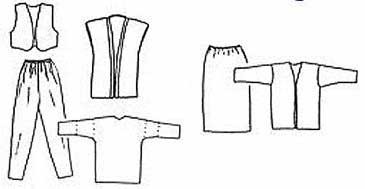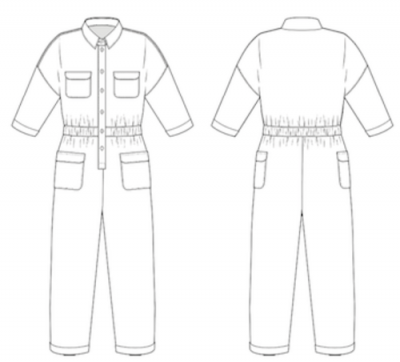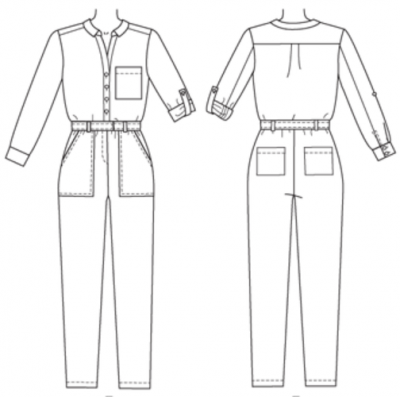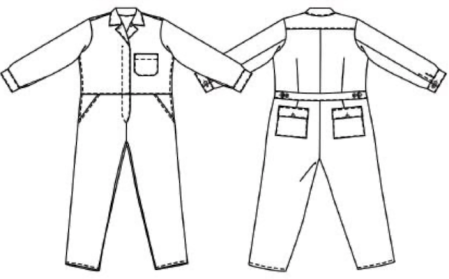The 2022 version of this post, with links that work! is here.
These are patterns which the pattern companies claim you can sew in 3 hours or less. Mainly a list of all the timed patterns I found in print in November 2016. Since then I’ve been adding individual patterns when I’ve come across them.
These times assume you’re an experienced sewer !
And they usually only mean sewing time, not including preparation and cutting time.
(2022) Sadly both Simplicity/New Look and Butterick/ McCall’s/ Vogue have completely changed their sites since this was written 6 years ago. I’ve updated some of the links but, sorry, a few of the links are unchanged.
I’ve posted several times on the topic of quick-make patterns, starting in 2010. My last post (March 2016) has now expanded so much it was getting unwieldy. So I’ve divided it in two :
– this post, on patterns the companies claim a sewing time for,
– a second post on patterns that are also very quick and easy, though no one makes any claims about how long you’ll need : Very quick and easy patterns which are not timed.
Obviously these patterns have to avoid any technique that takes time. So they’re very simple, with few added design features and little shaping. But there are designers who manage to respond to this need by providing interesting shapes and design features that don’t need much work.
It’s also helpful to know which sewing techniques you’re relaxed about. For example, most quick patterns avoid zips and buttonholes, collars and set-in sleeves, any hand sewing. But if you’re a sewist who can do those in a whizz, then why not.
Fabric choice can be crucial. Quality fabrics can give a luxury look to even the simplest of styles (see Eileen Fisher for examples). Choose wovens with a bit of body, so they don’t need much support from interfacing and don’t change shape while you’re sewing them. Not slippery, don’t fray easily. This is not the time to be trying viscose or thin silks. Similarly with knits – choose stable ones, that aren’t too floppy. Knits have the advantage they don’t fray, so no need for seam finishing. And there are non-knit fabrics like this too.
– – –
Big 4 timed patterns
These are the Big 4 time-limited patterns available in November 2016.
Most Simplicity-New Look patterns have a download option.
New Look 6816 capsule of knit top, skirt, pants.
–
Tops, Dresses, Shirts
The links in this section are correct in mid-2022.
All the dress patterns can be shortened to tops and tunics.
New Look 6483 sleeveless and sleeved woven tops.
New Look 6892 peasant style tops.
McCall’s 6558 peasant style tops and dresses.
New Look 6347 sleeveless dresses.
New Look 6889 sleeveless and short sleeved dresses.
New Look 6352 sleeveless and short sleeved dresses.
McCall’s 5893 sleeveless and short sleeved empire waist dresses, knits.
McCall’s 6465 sleeveless and sleeved dresses.
Also for men :
Simplicity 8180 1-piece collar shirt, tie, shorts.
For previous editions of these patterns, Palmer-Pletsch claimed their unisex camp shirt and banded collar shirt patterns took 2 or 3 hours. They’re now not so optimistic !
Butterick 6846 1-piece collar camp shirt. Some stores still have this as McCall’s 6932.
Butterick 6841 band collar shirt. Formerly McCall’s 6613.
–
Skirts and Pants
In 2022 all the timed patterns have disappeared, except for this one :
New Look 6843 skirts with zip.
There are of course multiple easy patterns which are not timed, see the posts on elastic waist skirts and elastic waist pants.
–
Layers
Again in 2022 only one of these remains :
McCall’s 6209 ponchos.
Butterick used to have a quick pattern for waterfall front jackets, Butterick 4989, which is now out of print.
And they had an unlined blazer pattern that Butterick claimed you could sew in 2 hours ! 😀 Look for Butterick 4138 dated 2004.
McCall’s 6172, the famous Palmer-Pletsch 8-hour lined blazer pattern which sold over a million copies, is now also out of print.
It might be worth hunting out if you want a more female shape.
The more recent boyfriend-shaped Melissa Watson designed blazer is still available from Palmer-Pletsch, McCall’s 7818.
–
Costumes for men and women
Neither of these is still in print :
McCall’s 7229 : nativity.
McCall’s 6142 : clown.
– – –
Independent pattern companies
Again these are just a few patterns I’ve found which claim specific making times.
There are many more independent pattern companies mentioned in my other post on quick patterns : Very quick and easy patterns which are not timed.
For modern casuals, try Seamwork download patterns from Colette Patterns – supposed to take less than 3 hours in total (a few for men).
Seamingly Smitten claims most of their download patterns can be made in an afternoon.
The elegant simple classics by Loes Hinse sold by Textile Studio Pattern, are no longer available, but might be worth looking out for.
Shorten the skirts and dresses to transform the look. Or try the jackets at thigh, knee, or low calf length.
With a little more time – Decades of Style ‘Everyday’ patterns are supposed to be sewable in a day. Most are also rated ‘easy’.
Some individual patterns :
Fancy Tiger Crafts free pattern for a One Hour Top is a simple dolman shape knit top. They have a video class for it at Creative Bug showing how to make it on a serger/overlocker and a sewing machine.
And if you enjoy self-drafted patterns from a book there’s the 1920s One Hour dress by Mary Brooks Picken.
Sew Over It claim an Intermediate sewer can sew their Ultimate Shift dress in 3 hours.
CNT Patterns have :
‘A little somethin’ 3 hour shawl collar jacket.
‘Start after breakfast finish before lunch’ jacket with raglan sleeves.
Christine Jonson Studio Collection draped vest and jacket download patterns for knits.
She says the vest can be sewn in 5 minutes !
These free download patterns from Camelot Fabrics are said to take an afternoon :
boxy dress – for variations : shorten to top / tunic, change neckline shape or finish.
cropped jacket – for variations : lengthen, change front shape.
pyjama pants – with elastic waist and side seams. Make a size smaller for a daywear version ?
Sewlidarity says she made 2 pairs of Sew Over It Ultimate Pyjamas (download) in 5 hours (vlog starts at 1.50).
– – –
Of course you may well have your own patterns which you can whip up in a short time. I’ve just been talking about patterns which the pattern companies are willing to make a commitment about. They show that everyone can make a garment quickly, not just people who have a serger/overlocker and are making a tee 😀
Incidentally you may have wondered why there are so few knit patterns in this post. There are many knit patterns in the next post, on quick but not timed patterns : Very quick and easy patterns which are not timed. Perhaps there are so many techniques / tools / notions for making knit garments, the pattern companies don’t want to guess the time you might need.
Whether you enjoy using these fast patterns may depend on your sewing style. I’m not a quick sewer, and I don’t do well under pressure. I need to spend time developing the fit of a pattern and getting secure about the techniques used before I can be sure of making it more quickly.
But there are many people who love to jump straight in for a quick reward to their sewing.
So Good Luck with developing a range of speedy Tried ’N True patterns, if that’s what you enjoy.
– – –
Patterns and links available November 2016
= = =










